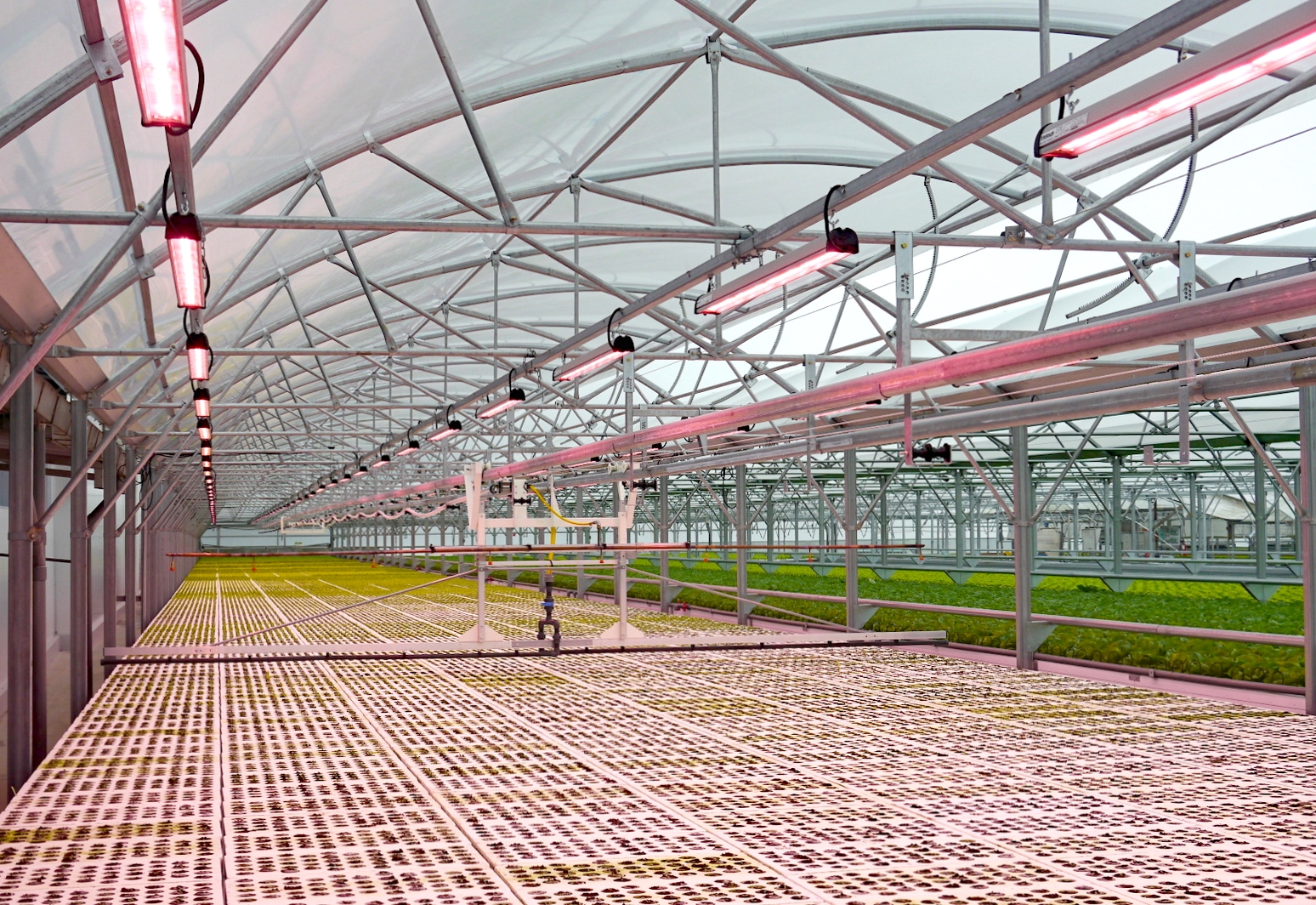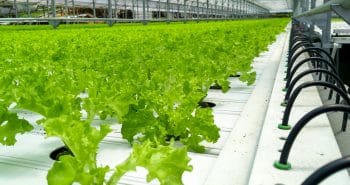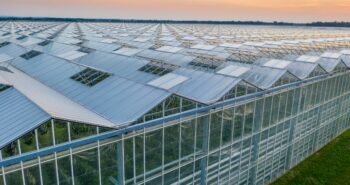This post is also available in: ![]() English
English ![]() Français (French)
Français (French)
– What is adiabatic cooling ?
Adiabatic cooling (also called evaporative cooling) works on the principle of water evaporation. It means that the air is cooled to a desire temperature for the crops. This is a cooling and ventilation technique that uses water as a refrigerant.
During the adiabatic cooling process, water evaporates in an air stream and changes from a liquid to a gaseous state. This transformation requires energy, which is extracted from the air in the form of heat. This process cools the air.
Advantages of adiabatic cooling
Unlike traditional air conditioning, adiabatic cooling does not recirculate hot, polluted indoor air, but provides ventilation with 100% fresh, filtered, clean, cooled outdoor air. It is an excellent way to make energy saving and renew the air in the growing area.
– What is positive pressure ventilation ?
Positive pressure ventilation is a technique to mechanically ventilate greenhouses. The air is forced in to create a positive pressure in the greenhouse. We are talking about a air flow rate of around 0.3 to 0.6m³/min-m²s.
The positive pressure inside the growing area will reduce the risks of intrusion of insects and other harmful organisms in the greenhouse.
Below an article on the Horti-Generation blog introducing the positive pressure ventilation:
– Fans and Pad cooling vs. adiabatic positive pressure
In a nutshell, we can say that positive pressure adiabatic cooling is getting more popular in North-America especially with the new generation of growers.
One of the main advantage of positive pressure compare to negative pressure is to protect the growing area reducing the risks of insects, bacteria, virus and others pests entrance into the greenhouse. Actually, the overpressure in the greenhouse will provide an invincible barrier that will also allow for better climate management
Moreover, in a fans and pad system the main limitation is the greenhouse length and type of crops. Indeed, in longer greenhouse > 150′ (45m) long or with taller crops such as vine-crops the air circulation and cooling performance will not be optimal. In fact, the air will be cooler and more humid near the pad wall and warmer near the exhaust fans… This will create heterogeneity and issues for the growers.
Advantages of positive pressure cooling
Below the main advantages of adiabatic positive pressure cooling:
- Physical barrier (netting / filters) and overpressure environment for pests exclusion ;
- Better cooling efficiency and air distribution (homogeneity) inside the growing area compare to fans and pad cooling ;
- Better climate management when combined with passive ventilation (roof vent) and other equipment technology to be in a more semi-closed environment ;
- Energy savings thanks to the cooling efficiency (but it depends also the project location and growing system layout: to be analyzed by experts) ;
- Optimal agronomic performance when the positive pressure adiabatic cooling system poly pipes (air distribution) can be located under the crops (canopy) for an accurate action and plant stimulation especially for leafy greens, herbs… grown in a hydroponic system (NFT) ;
Conclusion
Adiabatic cooling has been used for years, it is still a very popular way to cool your greenhouse more particularly with fans and pad negative pressure system in North-America.
Switching to a positive pressure environment shows many benefits ! However, it will require some more analysis made by greenhouse climate experts working on the right system also sizing for the air intake surface, netting selection for insects exclusion, cooling unit choice and air distribution layout…
At the end, the grower benefits will be important reducing the use of pesticides, energy… in order to produce stronger and consistent crops.
Sources:
Evaluation of an Adapted Greenhouse Cooling System with Pre-Chamber and Inflatable Air Ducts for Semi-Arid Regions in Warm Conditions: https://www.mdpi.com/2073-4395/10/5/752/htm
How To Properly Ventilate Your Greenhouse and Why this is Essential in Your Success: https://themarketgardener.com/farming/how-to-properly-ventilate-your-greenhouse-and-why-this-is-essential-in-your-success/
LIBA: Semi-Closed Greenhouse
https://liba-tech.com/system/semi-closed-greenhouse/







It would be good to expand this section with a comment about the impact of positive pressure cooling on CO2 management. It is probably less viable to increase the CO2 level in such a greenhouse above ambient levels and therefore may result in some loss of yield potential
Dear Arie,
You are right, it is more an introductive post about positive pressure adiabatic (evaporative) cooling but it is an excellent suggestion to have a complementary article about the impact on CO2 management!
However, CO2 enrichment in a positive pressure greenhouse (semi-enclosed for example) is something very common among large hi-tech producers.
Thank you,
Corenthin